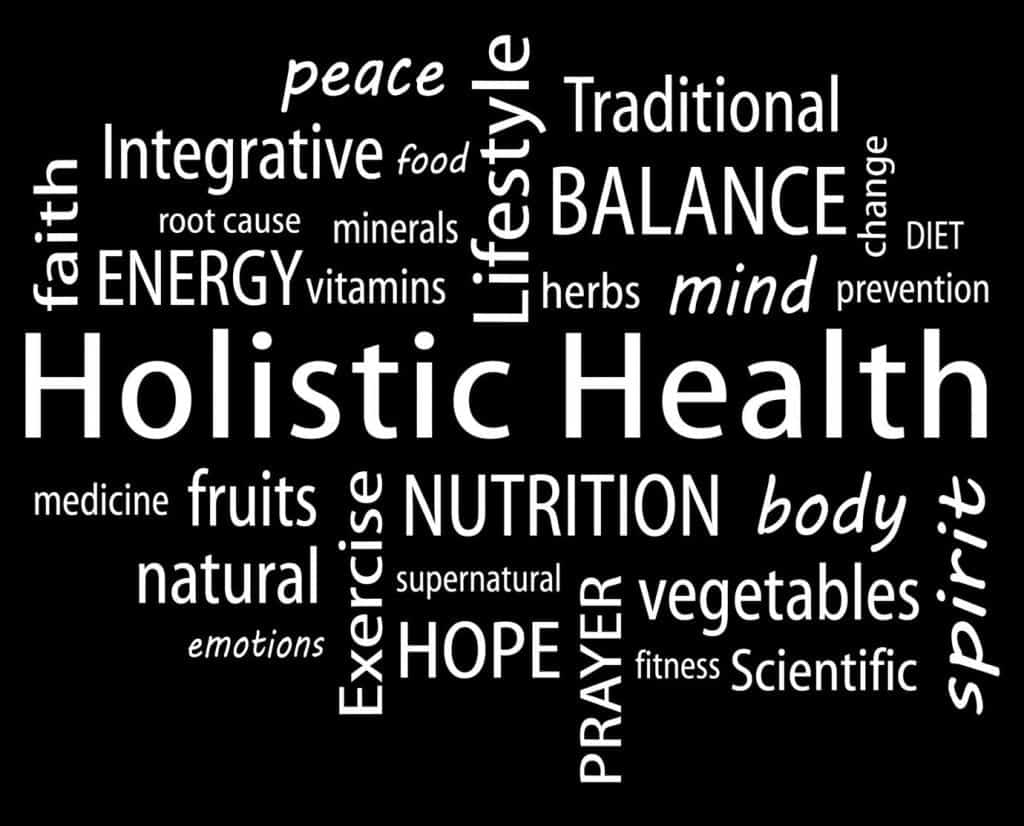Coping with Histamine Intolerance: Tips and Strategies
Last month we looked at what histamine intolerance symptoms are, what causes it and its effects on the body. Put simply, it's when your body is flooded with histamine that it can't break down fast enough.
Unfortunately, when investigated by doctors, there are no apparent ‘issues’. Have you ever heard “there is nothing more that can be done”? Or perhaps you have been prescribed some ‘band-aid’ medication. This only helps manage your symptoms and not the cause.
Fortunately, there are many things you can do to help reduce histamine levels. As with anything, it will take some time depending on the underlying causes. But you will get there! You just need to be patient and committed. I have helped many people improve (including myself), by following some simple steps.
Testing for Underlying Causes of Histamine Intolerance
Identifying the root causes of this intolerance is vital to making progress with symptoms. They can be caused by a variety of factors such as genetics, infections, gut dysbiosis, oestrogen dominance, progesterone deficiency, stress and environmental triggers & heavy metals.
Tracking Histamine Symptoms
The first step is maintaining a food & mood journal to track symptoms and pinpoint potential triggers. High-histamine foods such as aged cheeses, fermented foods, and processed meats can often trigger symptoms in those with histamine intolerance. In addition, alcohol, stress, and hormonal fluctuations can also contribute to histamine intolerance. Once potential triggers have been identified, it may be necessary to undergo testing to identify underlying conditions that may be contributing to symptoms.
Understanding the Role of Gut Health in Histamine Metabolism and Intolerance
One common underlying cause of histamine intolerance is gut dysbiosis, such as small intestinal bacterial overgrowth (SIBO) or bacterial overgrowths in the large intestines, also, intestinal permeability (leaky gut). Testing for these conditions may include a comprehensive stool analysis, lactulose breath test, or zonulin test. These tests can identify imbalances in gut bacteria, intestinal inflammation, and increased intestinal permeability. Once identified, these conditions can be treated with targeted interventions such as antimicrobial therapy, dietary modifications, or pre & probiotics to restore gut health and alleviate histamine intolerance symptoms.
Genetic Polymorphisms and Histamine Intolerance
Another possible underlying cause of this intolerance is genetic variations or polymorphisms. These include:
- DAO gene: Variations in the DAO gene can affect the activity of the enzyme diamine oxidase, which is responsible for breaking down histamine in the gut.
- HNMT gene: The HNMT gene encodes the enzyme histamine N-methyltransferase, which is responsible for breaking down histamine in the brain.
- COMT gene: The COMT enzyme governs phase 2 liver detoxification of oestrogen via methylation. If COMT is not working properly, then you can get a build-up of oestrogen, and oestrogen increases histamine.
- HDC gene: The HDC is a protein-coding gene that encodes the enzyme histidine decarboxylase, which is responsible for converting the amino acid histidine into histamine
- KIT gene: The KIT gene encodes the KIT protein, which is a receptor for stem cell factor (SCF) and is involved in the growth and differentiation of hematopoietic cells, including mast cells.
- ALDH genes: The ALDH genes encode enzymes that are responsible for the last breakdown of histamine in the body. Some variants can be up to 90+ times slower than wild type.
Variations in these genes can affect the metabolism, production, and breakdown of histamine, as well as the immune response and inflammation, leading to an increased risk of histamine intolerance. Identifying genetic variations associated with histamine intolerance can help inform appropriate interventions, such as dietary modifications, supplementation, or medication, to reduce symptoms and improve overall health.
How to Reverse Histamine Intolerance
There are three main things that you can do, to reduce the histamine overload and activity in your system.
Starting a diet low in this substance helps reduce its levels in the body. We can look at the supplements for histamine intolerance and lifestyle changes we can make.
The histamine-lowering diet is aimed at reducing the intake of high-histamine foods and promoting the consumption of low-histamine alternatives. This diet involves avoiding or limiting foods that are naturally high in histamine or that trigger the body to release histamine, such as aged cheeses, fermented foods, alcohol, and certain fruits and vegetables. Instead, the diet encourages the consumption of fresh foods that are low in histamine, such as fresh meat, poultry, fish, and fresh vegetables. The histamine-lowering diet can be challenging to follow but is not long-term. It can be an effective way to manage histamine intolerance symptoms and improve overall digestive health while we address underlying causes.
Supplements and Medications for Histamine Intolerance
Supplements and medications can also be used to manage histamine intolerance symptoms. Several natural supplements may help lower histamine levels in the body, such as quercetin, vitamin C, and DAO enzymes (diamine oxidase) supplements. Quercetin is a flavonoid found in many fruits and vegetables that has been shown to have anti-inflammatory and antihistamine properties. Vitamin C is a powerful antioxidant that can also help to reduce histamine levels in the body. DAO supplements are enzymes that help break down histamine in the digestive system and may be especially helpful for individuals with low DAO levels.
In addition to natural supplements, there are also several medications often prescribed to manage histamine intolerance symptoms. Antihistamines are a common treatment for histamine intolerance and work by blocking the effects of histamine in the body. Proton pump inhibitors (PPIs) can also be used to reduce the production of stomach acid, which can help to reduce exogenous histamine in the digestive system. However, it's important to seek advice before taking any supplements or medications, as they may have potential side effects.
Primarily you can increase your histamine tolerance by improving your gut health and function. Your first step is finding the underlying cause as discussed in the previous blog post. Testing for H.pylori, SIBO, dysbiosis, and digestive enzyme insufficiency is all possible through a Functional Nutritionist like myself. We then address what’s relevant to you.
Many people need to heal the gut lining. This encourages the nutrients that you eat to be absorbed and function properly. Having the right pre and probiotics at the right stage can help this along, reducing inflammation and supporting your immune system. Glutamine supports intestinal function by, promoting the synthesis of healthy mucosal cells (may need to be avoided at the beginning of treatment). Broccoli sprout extract is a favourite of mine for healing leaky gut and getting improvements with histamine intolerance.
Lifestyle Changes for Histamine Intolerance
In addition to dietary changes and supplements, lifestyle modifications can also help to manage histamine intolerance symptoms. Stress reduction techniques such as meditation, yoga, or deep breathing exercises can be helpful, as stress can worsen histamine intolerance symptoms. Regular exercise can also be beneficial, as it can help to reduce inflammation and improve overall health. However, it's important to avoid overexertion or high-intensity exercise, as this can trigger histamine release and worsen symptoms.
Tracking your menstrual cycle can be beneficial for individuals with histamine intolerance, as hormonal changes during the cycle can affect histamine in the body. During the luteal phase of the menstrual cycle, estrogen levels increase and can trigger the release of histamine, potentially worsening histamine intolerance symptoms. By tracking your menstrual cycle, you can anticipate when these hormonal changes are likely to occur and take steps to manage symptoms during this time.
There are several ways to track your menstrual cycle, including using a calendar or a mobile app. Some apps even allow you to track symptoms such as headaches, fatigue, or skin rashes, which can help you identify patterns and triggers. By tracking your menstrual cycle and symptoms, you can better understand how hormonal changes may be affecting your histamine intolerance and take steps to manage symptoms more effectively. We can also do hormone testing for those that it's relevant for.
Another important lifestyle change is reducing exposure to histamine in the environment. This can involve avoiding triggers such as pollen, dust, or animal dander, and using air purifiers or HEPA filters to remove these particles from the air. In addition, reducing exposure to chemical irritants such as cleaning products, perfumes, or cigarette smoke can help to reduce symptoms of histamine intolerance. Overall, lifestyle changes can be an effective way to manage common symptoms and improve quality of life.
Histamine-Lowering Diet and Nutrition
For some time (Usually 4-8 weeks), you will need to be on a low-histamine diet. Make sure you check out the table of high-histamine foods mentioned in last month’s article. Again, your healing time will depend on how long you have been experiencing the unpleasant symptoms of histamine intolerance.
- Follow a gluten-free and dairy/lactose-free diet.
- Avoid histamine-rich foods – vinegar, aged cheese, and alcohol, in particular wine
- Protein, if possible organic. Needs to be fresh. Aged meat and fish have a much higher level of histamine. Avoid tinned tuna & salmon.
- Apples (which naturally contain quercetin, mainly green), pears, raspberries
- Lettuce, carrots, pumpkin, potato, capsicum – to name a few
- Brown rice, quinoa, lentils
- Avoid additives – sulphates (found in some dried fruits), nitrites, food dyes
- Avoid products with cocoa
- Herbs in cooking – especially turmeric
- Cabbage, broccoli, cauliflower, kale, silverbeet, and bitter herbs.To support the liver in clearing histamine.
- Raddish, rocket, watercress, radicchio, endive. To support the liver in clearing histamine.
After some time, once the underlying causes have been addressed, you may be able to slowly reintroduce some of these foods back into your diet. With some guidance and using a food diary, you will learn which foods you can eat. Some foods you will be able to have sometimes and, others you may not.
You can manage histamine intolerance. As a result, you will be able to live more comfortably and be free of your symptoms. Above all, you need to be patient. Let your body heal itself.
For help with histamine intolerance, IBS support or its underlying causes check out my Gut Fix Program for more information on the steps we’d go through together.


